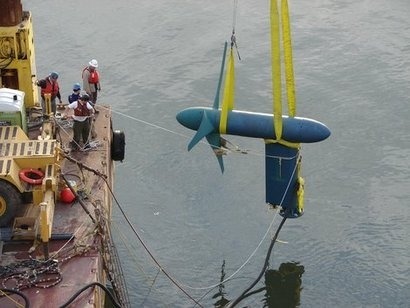
Marine classification society ClassNK is hoping to contribute to the widespread development and use of new marine energy technology by verifying the feasibility and practicality of a new testing facility in Singapore as a third party certification body.
ClassNK made the announcement at the 2014 Asian Clean Energy Summit in Singapore, held on 28th to 29th October. The study is intended to pave the way for the establishment of the world’s first marine renewable energy testing facility to be located in the tropics.
There is a growing need for testing facilities given the growing demand for renewable energy. Many governments around the world have expressed interest in marine renewables in particular. The new study will assess the feasibility of establishing a testing facility for 1/5-1/10 scale tidal wave generator systems in the waters off the coast of Singapore, including surveys of tidal forces, as well as environmental and operational viability assessments. The study will be conducted by a consortium led by ClassNK and the Energy Research Institute at Nanyang Technical University (ERI@N), with support from other leading research institutes and consultants including the European Marine Energy Centre (EMEC), Denmark-based water and environment consultants DHI, and oil, gas and mining infrastructure development specialists Fugro.
“Our goal is to make Singapore a leader in the new maritime energy technology and we consider this facility an important step to achieving that goal” said Professor Subodh Mhaisalkar, Executive Director of ERI@N. “ClassNK, with its incredible background in maritime energy and offshore research, and extensive experience assessing both maritime and offshore structures, is the perfect partner to help verify the feasibility of this innovative new facility and we are excited to be working with them on this important project.”
The Singapore facility would differ from the similar UK-based EMEC in that it will practically test marine energy technologies in high temperature tropical waters such as those found in Southeast Asia.
For additional information:

